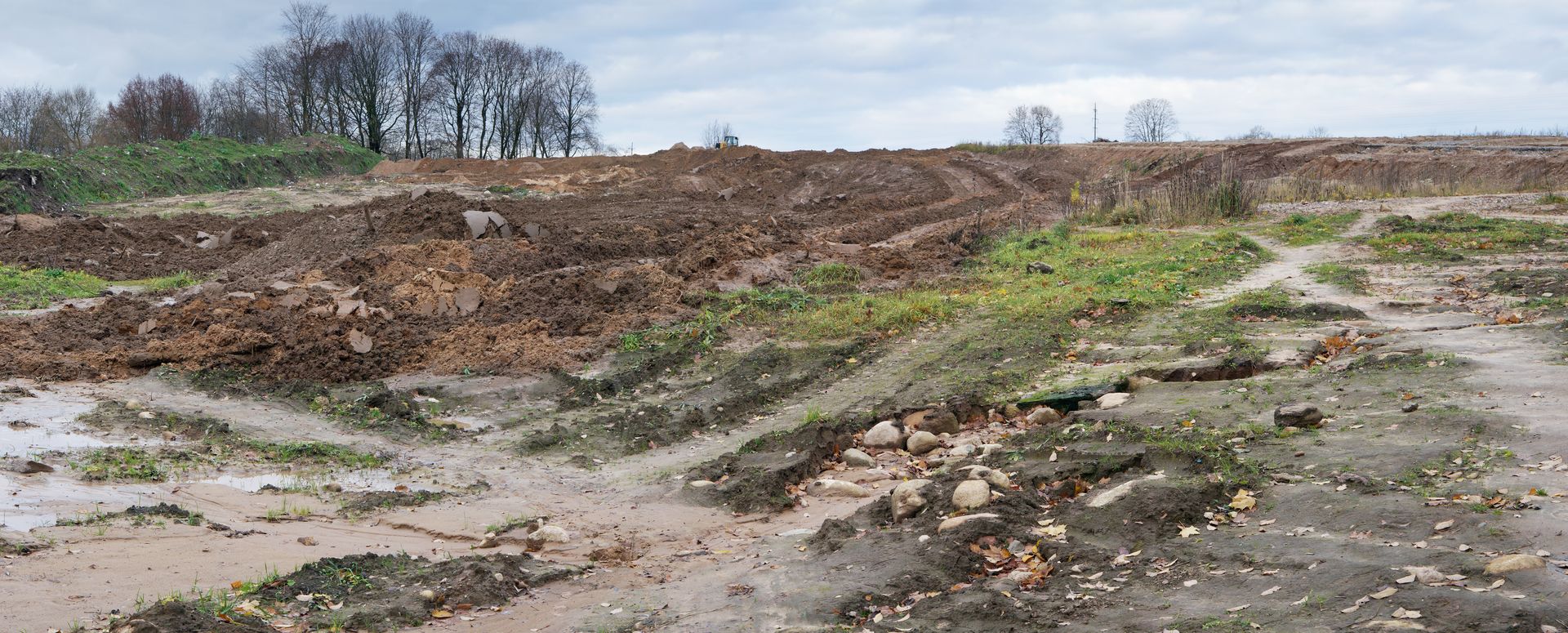By some estimates, over a third of the nation’s topsoil has been eroded over the past century and a half.
Topsoil erosion not only impacts soil quality but also leads to concerns downstream, such as pollution and damage to local ecosystems.
If your property is dealing with excessive erosion caused by human activity or elemental exposure, then we have answers for you. This guide will explore the root causes of topsoil erosion and lay out seven simple solutions to eliminate erosion.
Why Soil Erosion Is Dangerous
Topsoil erosion significantly degrades the quality of soil, impacting both landscaping and agriculture nearby.
Beyond its impact on agriculture, soil erosion contributes to sedimentation in water bodies, degrading water quality with increased turbidity and threatening aquatic ecosystems.
Increased runoff resulting from erosion can also elevate the risk of flooding, causing damage to infrastructure and displacing communities. Moreover, the removal of topsoil diminishes its ability to store carbon, exacerbating climate change.
What Causes of Soil Erosion
For erosion to occur, elements, such as wind and rain, must interact with exposed soil to loosen or dislodge them. Typically, this occurs in areas on large slopes or hills where water can loosen the soil at a higher velocity and where there is no protective ground cover, such as vegetation.
Some common culprits of soil erosion include:
- Water Erosion: Rain or snow slowly dislodges fine particles in the topsoil, leading to soil erosion.
- Wind Erosion: In arid and semi-arid regions, strong winds can lift and transport loose soil particles over long distances, causing erosion over time.
- Deforestation: The removal of forests for agriculture, logging, or urban development exposes the soil to the impact of rainfall and wind, leading to increased erosion. Tree roots play a crucial role in stabilizing soil.
- Overgrazing: Excessive grazing by livestock removes protective vegetation, exposing the ground soil to erosive forces. The trampling of soil by hooves further contributes to soil compaction and erosion.
- Construction and Urbanization: The clearing of land for construction projects and urban development removes natural vegetation cover. The disruption of soil during construction activities makes it susceptible to erosion.
If you hire erosion control services, your contractor will primarily focus on restoring ground cover and reducing the vulnerability of slopes where runoff velocity is increased.
But if you choose to take matters into your own hands, we’ve outlined seven solutions that are guaranteed to help.
Ways to Prevent Soil Erosion
1. Plant Vegetative Cover
Establishing and maintaining vegetation, such as cover crops, grasses, and trees, helps anchor the soil and reduce the impact of rainfall. Plant roots help bind the soil, preventing loose sedimentation.
A fast and effective product that helps restore vegetative cover is known as hydroseeding. While seeds are generally limited to grass and wildflowers, hydroseeding is highly effective at restoring ground cover and providing new seeds with strong roots.
Planting vegetative cover offers aesthetic value and reduces the cost required to restore disturbed land.
2. Contour Plowing
Slopes and hills are often the most vulnerable land surfaces to erosion.
Plowing along the contour of the land, rather than up and down slopes, helps slow down water runoff and reduces soil erosion. This method effectively captures rainwater and allows it to infiltrate the soil.
3. Downspouts and Slope Drains
Another mechanical intervention used to prevent erosion on slopes is the use of downspouts and slope drains. While most properties are outfitted with downspouts, special slope drains with piping can be used to divert water down a slope without having to travel down its surface.
These devices are especially useful for active construction zones and larger properties.
4. Mulching
Mulching is a temporary measure that provides protective cover to exposed soil.
Applying mulch, such as straw or wood chips, to the soil surface reduces the impact of raindrops, minimizes water runoff, and helps retain soil moisture.
5. Erosion Control Blankets
Similar to mulching, you can purchase geotextile blankets, known as erosion control matting, that protect exposed surfaces. While temporary, these blankets are an excellent device to protect ground surfaces from erosion during active construction projects.
6. Riparian Buffers
Establishing vegetated buffers along water bodies helps filter sediment and nutrients from runoff before they reach the water. In some cases, riparian buffers also provide habitat for aquatic organisms.
7. Windbreaks
Planting windbreaks, such as rows of trees or shrubs, helps reduce wind speed and the likelihood of wind erosion. Windbreaks also provide additional benefits, such as habitat for wildlife.
While some of these controls may be installed DIY, we highly recommend contracting a professional erosion control company. A professional can perform assessments and install erosion controls that offer the best protection and don’t leave any surface of your property unprotected.
Frequently Asked Questions (FAQs)
Can soil erosion be reversed?
While the natural process of soil formation is slow, adopting soil conservation practices can help mitigate erosion and enhance soil health over time. Furthermore, fertilizers can be introduced to restore the natural balance and integrity of the soil to its natural state.
How does vegetation prevent soil erosion?
Vegetation, with its root systems and above-ground cover, stabilizes the soil. Roots bind soil particles, and the canopy reduces the impact of rainfall, preventing erosion.
Are there natural factors that contribute to soil erosion?
Yes, natural factors like rainfall, wind, and slope gradients can contribute to soil erosion. However, human activities often accelerate these natural processes.

